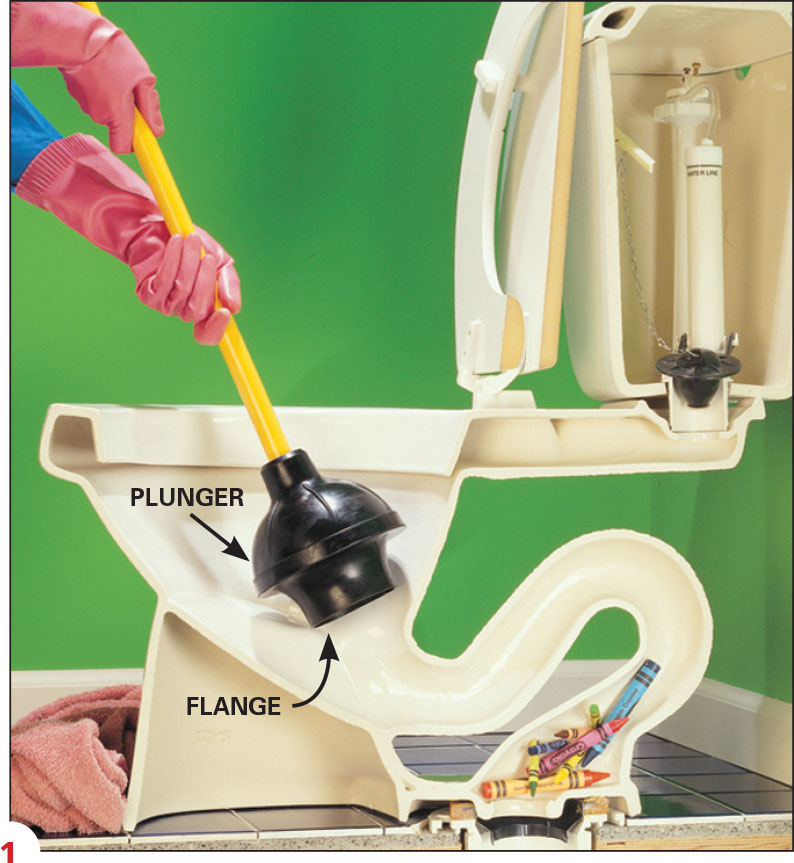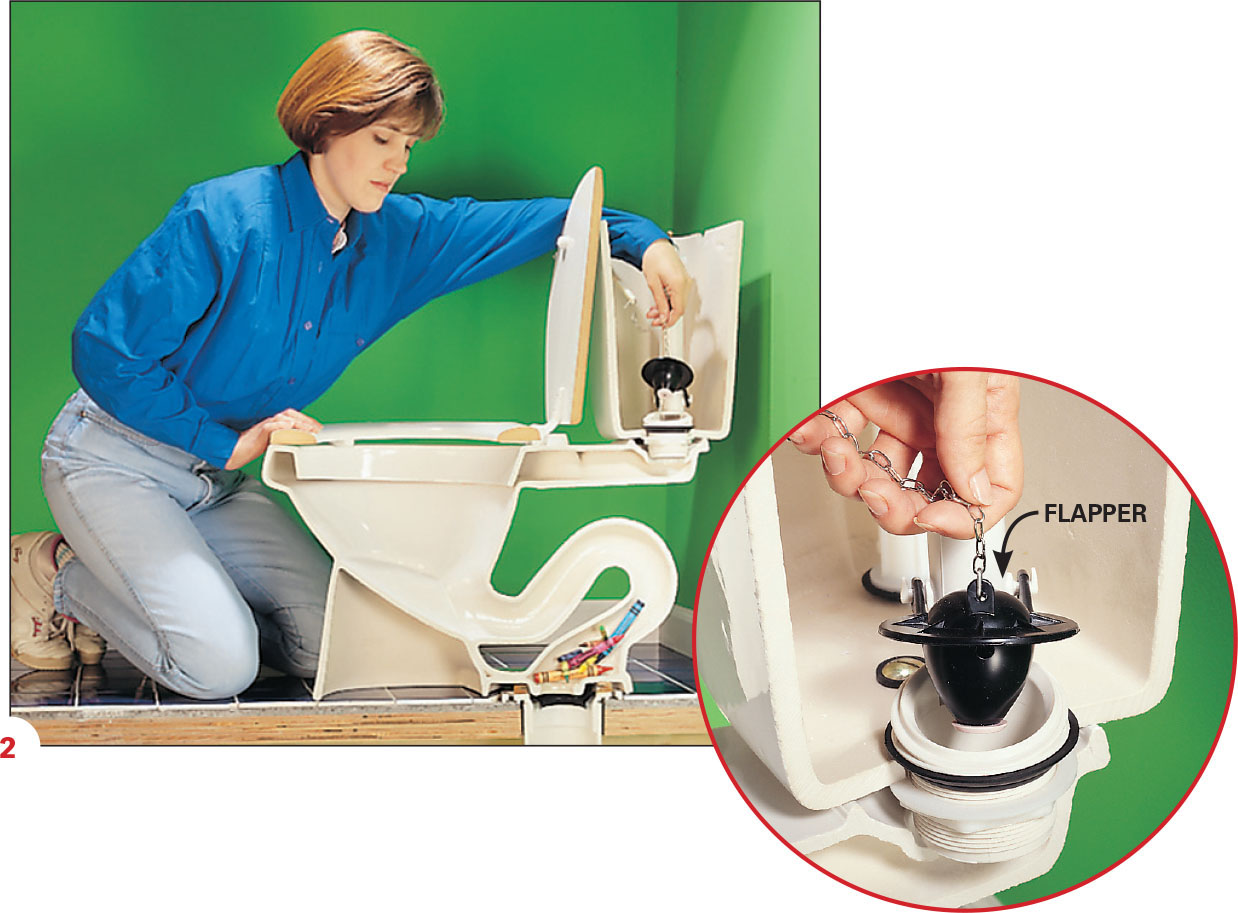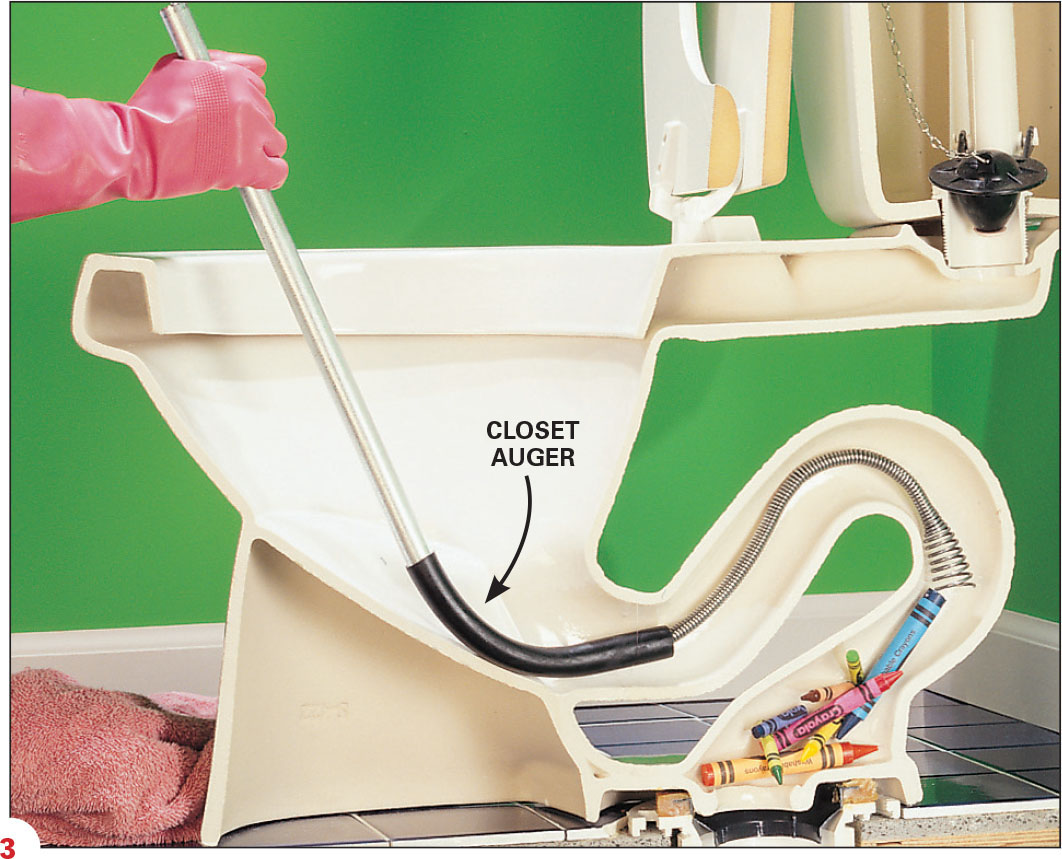
A poor flush means that your toilet drain is either partially or completely plugged. A toilet that’s completely plugged—a no-drainer—is obvious. The toilet bowl will fill to the brim with flush water and perhaps overflow. Give the water level 10 minutes or so to drop, then attack the problem with a plunger (Photo 1).
However, most clogged toilets are slow drainers, that is, flush water partially fills the bowl but doesn’t rush out and clean away the waste. The water level remains high, then usually drains down to normal height within a minute or two. So if you suspect a problem, test the drainage first as we show in Photo 2.

1. Don’t flush the toilet if you suspect a clog. Make a first plunge gently to expel air from the plunger bell; then plunge vigorously in and out. Keep the plunger covered with water. Stick with it, plunging 15 to 20 times if necessary. If the plunger fails to clear a clog, use a closet auger, as shown in Photo 3. Keep towels handy to wipe up water that splashes out.

2. Test the drain by letting in small amounts of water—don’t use the flush handle. Instead, remove the tank lid and lift the flapper valve slightly to let a cup or two of water into the bowl to see if the water goes down. If it’s still plugged, you’ll have to push the flapper down to restore the seal quickly. Flushing a clogged toilet may flood your floor!

3. For stubborn clogs, spin a closet auger or regular snake through the drain. The hooked spring end should break through the clog or grab the obstruction (such as a rag) so you can pull it out. Once a clog passes the wax ring into the wider drain, it should move easily. If the clog resists all your efforts, you’ll probably have to pull up the toilet.